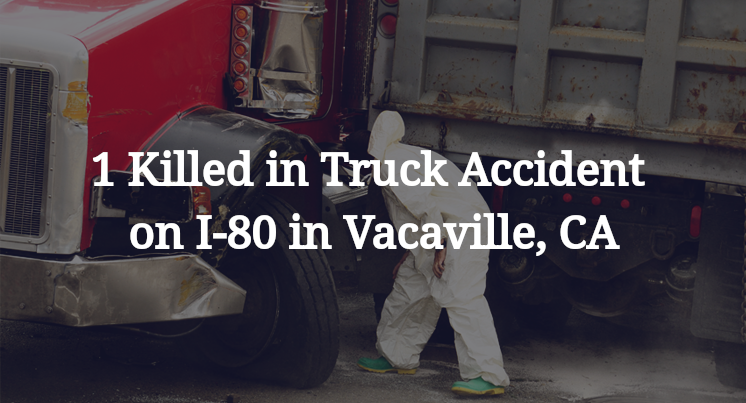1 Killed in Truck Accident on I-80 in Vacaville, CA
Vacaville, CA — April 22, 2025, one person was killed in a truck accident at about 4:20 a.m. on eastbound Interstate 80 near the exit for Leisure Town Road.
Authorities said a 2016 Mazda was stopped in a traffic lane when it was hit from behind by a 2024 Peterbilt semi-truck. It is not clear if the car's lights were on at the time of the crash.

A 58-year-old Stockton man died in the crash, according to authorities, but his name has not been made public at this time.
The truck driver was not injured.
Authorities have not released any additional information about the Solano County crash at this point. The accident is still under investigation.
Commentary
When a semi-truck rear-ends a stopped car on the interstate, particularly in the early morning hours, the key legal issue becomes whether the truck driver had enough time, and enough visibility, to recognize the hazard and avoid the collision. In this crash on I-80 near Vacaville, the fact that a car was stopped in a travel lane raises immediate concerns, but it does not automatically clear the truck driver of responsibility.
The collision happened around 4:20 a.m., when visibility is still limited and drivers may not be fully alert. If the Mazda was disabled, the question becomes whether it had its lights or hazard flashers on, and whether it was visible from a safe distance. That detail is still unknown. But even if the car was difficult to see, commercial drivers are trained to expect the unexpected, especially during early morning hours when road conditions, fatigue and limited lighting can all converge.
The truck’s engine control module will play a central role in this investigation. It can provide data on the vehicle’s speed, braking, and throttle input in the seconds leading up to the crash. If the truck was traveling too fast for conditions, or if there was no indication of braking before the collision, that would raise serious concerns about inattention or delayed reaction time. Investigators will also want to examine whether the truck had a clear line of sight or if roadway conditions, such as curves or elevation changes, obstructed the driver’s view.
It’s also necessary to examine the condition and placement of the Mazda. Was it disabled due to a mechanical issue? Was it stopped suddenly because of traffic ahead, or did it drift to a stop due to a lack of fuel or another failure? And most critically, how long had it been stationary in the lane before the collision occurred? If the vehicle was stopped for a significant amount of time and clearly visible, the truck driver had a duty to detect and respond to it. But if it came to a stop just seconds before the crash, then the opportunity to avoid it may have been limited.
Regardless of the Mazda’s condition, commercial drivers are expected to manage their speed and maintain a proper lookout at all times. A stopped car on a freeway is not a routine hazard, but that’s exactly why professional drivers are expected to remain alert and ready to respond. Because when a vehicle is struck from behind by a fully loaded semi, especially at highway speeds, the outcome is often fatal, and the legal system is right to demand answers.
This investigation needs to determine not just what the Mazda was doing in the lane, but whether the truck driver had a chance to avoid the worst-case scenario. Because when someone is killed in a crash like this, the responsibility doesn’t end at the point of impact. It begins with the decisions, or indecisions, that led up to it.

“These are essential reads for anyone dealing with the aftermath of a truck wreck”– Attorney Cory Carlson